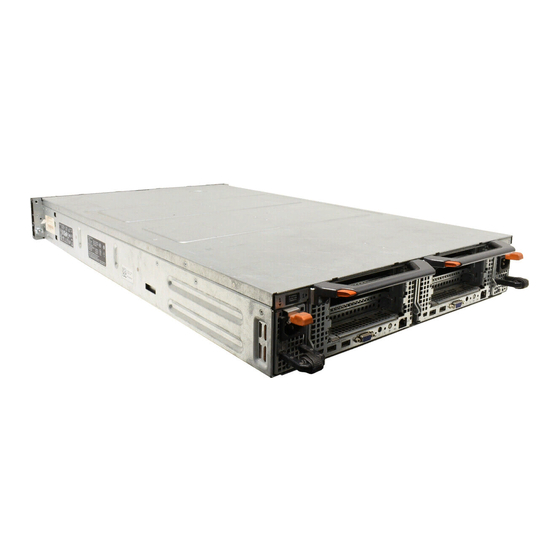Dell EqualLogic FS7600 Manual de instalação e configuração - Página 7
Procurar online ou descarregar pdf Manual de instalação e configuração para Armazenamento Dell EqualLogic FS7600. Dell EqualLogic FS7600 46 páginas. Appliances
Também para Dell EqualLogic FS7600: Visão geral (7 páginas), Manual do Proprietário do Hardware (32 páginas)

1 Before You Begin
Proper planning and adherence to requirements help ensure a successful installation. Before you begin the
installation, review the steps for getting started and perform all the preliminary tasks.
Introduction to the EqualLogic FS7600
The Dell™ EqualLogic® FS Series NAS appliances add Network Attached Storage (NAS) capability to the
EqualLogic product line to provide a high-performance, scalable unified storage platform. EqualLogic FS Series
appliances are powered by the Dell Fluid File System (FluidFS), Dell's high-performance, clustered, and
network-accessible file system.
A PS Series group provides iSCSI-accessible block storage. With the latest version of the PS Series firmware
and the addition of a Dell EqualLogic FS7600 NAS appliance, the same PS Series group can provide block
storage and support for Network Attached Storage.
The EqualLogic FS7600 NAS appliance consists of two 1Gb controllers with battery backup, and two power
supplies in one 2U chassis.
•
An EqualLogic FS7600 requires a PS Series group running the PS Series firmware version 6.0 or
later. For information on updating your PS Series group to the latest firmware version, see the
Release Notes and the Updating Storage Array Firmware document on the customer support
website.
A NAS cluster can support multiple, scalable NAS containers. In each container, you can create multiple CIFS
shares and NFS exports. Clients with the correct credentials can then access the shares and exports through the
NAS client VIP addresses.
The NAS cluster network configuration requires a client network and a SAN/internal network.
For security reasons, the internal network is usually a private network, and the client network is separate from
the SAN and internal network. See
Figure 1
and
Table 1
describe the NAS cluster hardware configuration.
Network Configuration Overview on page
17.
1
